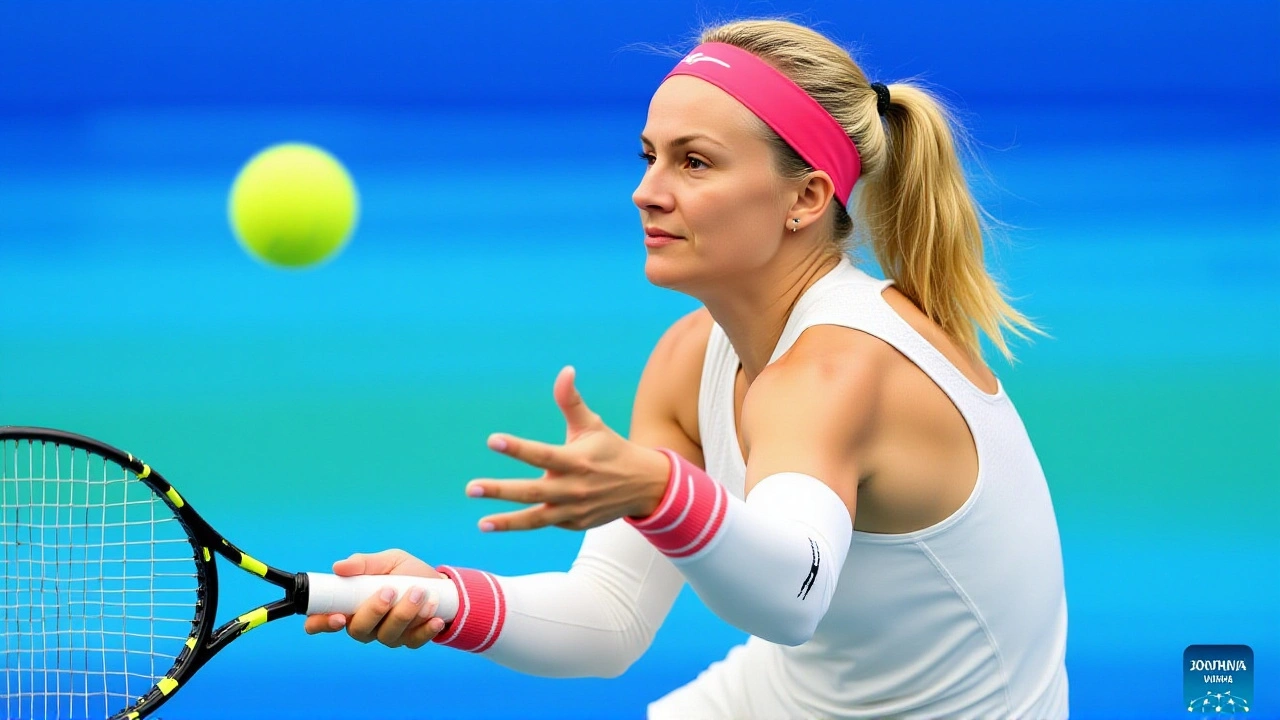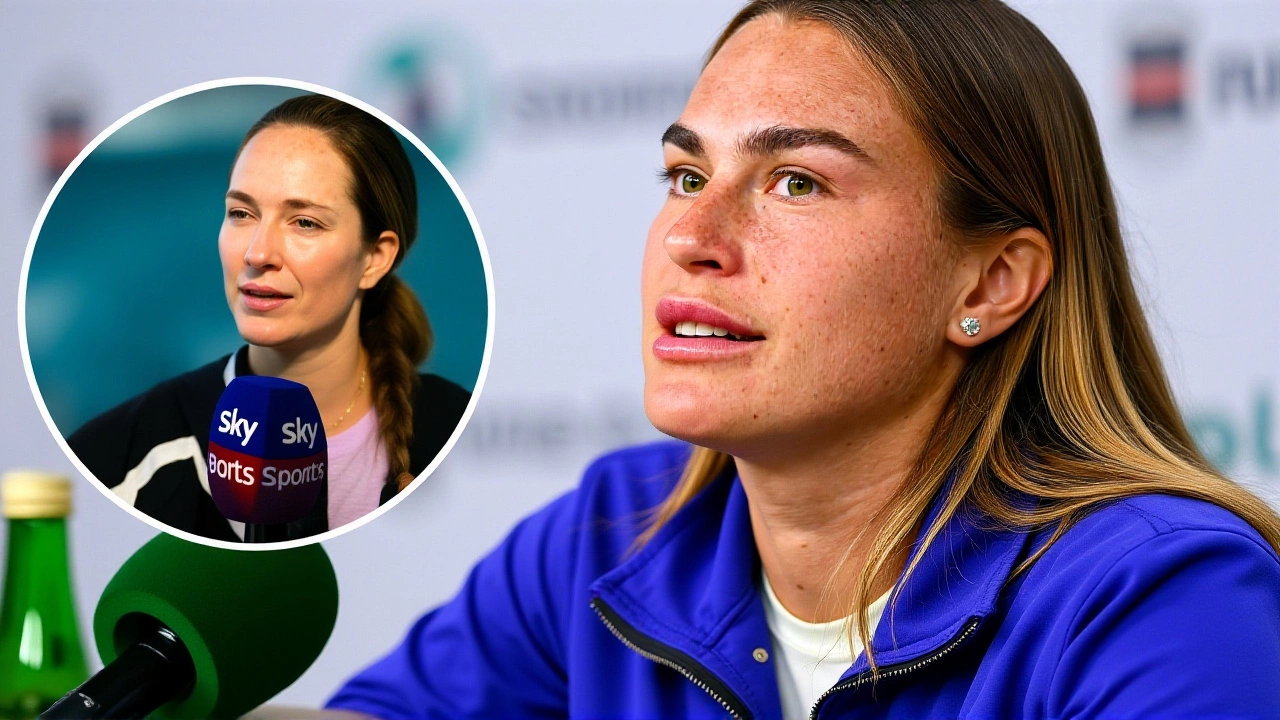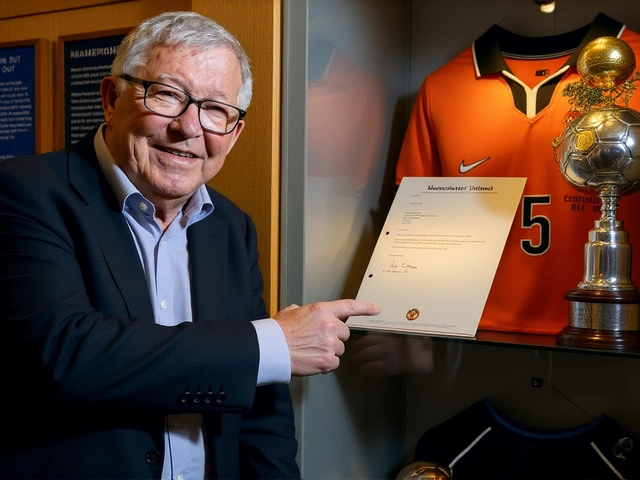When Aryna Sabalenka, world No. 1 from Belarus, survived a nail‑biting three‑set battle at the Wuhan Open on October 8, 2025, the tennis world breathed a sigh of relief. World No. 1 Belarusian Sabalenka edged out unseeded Russian Kamilla Rakhimova 6‑4, 3‑6, 7‑5, keeping her year‑end No. 1 hopes alive. Meanwhile, the same day at the Optics Valley International Tennis Center in Wuhan, Coco Gauff, the United States’ No. 3, steam‑rolled Spain’s Marina Bassols Ribera 6‑1, 6‑2, even as she lobbed 23 double faults. Across the border in Shanghai, men’s headline‑act Jannik Sinner crumbled with cramps against Dutch qualifier Tallon Griekspoor, setting the stage for a wild finish to the ATP 1000 event.
Saturday's WTA Action in Wuhan
The atmosphere at Wuhan’s Center Court was electric, with 12,000 fans filling every seat. Sabalenka’s opponent, Rakhimova, turned up the heat early, breaking serve in the second set and forcing a tiebreak that the Belarusian giant eventually lost. "I felt every point," Sabalenka told reporters after the match, her voice hoarse from a two‑hour‑47‑minute grind. "I was lucky to stay on my feet."
Gauff, on the other hand, never looked back. She delivered a blistering forehand barrage and a surprisingly aggressive net game, leaving Bassols Ribera scrambling. "I’m not happy with the double faults, but the score was there," Gauff said, flashing a grin that belied the 23 service errors.
Sizzling Showdown: Sabalenka vs. Rakhimova
Statistically, Sabalenka’s win was a narrow escape. She saved two break points in the final set and hit a tournament‑best 31 winners. Rakhimova, ranked No. 58, posted a career‑high 44 unforced errors, a testament to the pressure of facing a three‑time Wuhan champion.
For context, Sabalenka has lifted the Wuhan trophy in 2021, 2022 and 2023 – a rare three‑peat that puts her alongside legends like Li Na. The win pushes her ahead of Iga Świątek by 1,842 points, effectively sealing the year‑end No. 1 ranking, tournament officials said.
Gauff's Dominant Opener
Even with a double‑fault count that ranked her highest among the WTA Top 100 (9.5 % of serves), Gauff’s aggressive baseline play left Bassols Ribera on the defensive. Gauff’s first‑serve percentage hovered at 58 %, but she compensated with 12 aces and a 75 % win rate on second‑serve points.
"The double faults are something I’ll work on, but the win is what matters," Gauff explained, noting her goal to reach the semi‑finals without dropping a set.
Men's Drama in Shanghai: Sinner's Collapse
At the Qi Zhong Stadium, the crowd of 15,000 witnessed an unusual sight: world No. 1 Jannik Sinner hunched over the baseline, clutching his calf. He retired at 3‑6, 6‑4, 3‑6, citing severe cramps. It was his first loss to a non‑top‑5 player all season, and the first time he’d bowed out before a quarter‑final.
The match’s fallout was immediate. With two‑time champion Carlos Alcaraz already withdrawn due to a left‑forearm injury, the tournament’s odds swung dramatically toward Russian Daniil Medvedev, now the favorite according to Ladbrokes.

Implications for Rankings and Futures
- Aryna Sabalenka’s lead of 1,842 points makes her a virtual lock for the year‑end No. 1 spot.
- Coco Gauff’s straight‑sets win improves her WTA point tally by 130, keeping her comfortably in the top 5.
- Jannik Sinner’s early exit drops him 340 points, opening a narrow window for Novak Đoković if he returns to form.
- The Shanghai ATP 1000 now features a potential showdown between Medvedev and world No. 4 Daniil Medvedev in the semi‑finals.
Weather, Health, and Attendance
Both Chinese venues battled extreme humidity, with readings above 85 % and temperatures hitting 32 °C (89.6 °F). Medical staff logged 14 on‑court timeouts across Wuhan and Shanghai between October 5‑8, ranging from dehydration treatments to physiotherapy for cramps.
Nevertheless, organizers confirmed 100 % capacity, citing a surge in domestic tennis interest. The combined attendance for the two events topped 27,000 over the past two days.
Looking Ahead
Sabalenka’s next opponent will be either Naomi Osaka, the Japanese wild‑card, or Chinese hopeful Zheng Qinwen. Gauff awaits the winner of a Czech‑Chinese clash between Linda Nosková and Wang Xiyu. Meanwhile, Medvedev’s path in Shanghai could intersect with rising star Alejandro Tabilo in the quarter‑finals.
With the Chinese swing winding down on October 13, the tennis world will shift its focus to the Paris Masters and the ATP Finals, where the points race is expected to tighten dramatically.
Frequently Asked Questions
How does Sabalenka's win affect the year‑end No. 1 race?
Her victory widens the lead to 1,842 points over Iga Świątek, making it mathematically impossible for any other player to overtake her before the season‑ending ATP and WTA Finals.
Why did Jannik Sinner retire against Tallon Griekspoor?
Sinner suffered severe calf cramps in the third set, which forced him to stop play. Medical staff confirmed a muscle strain exacerbated by the high humidity and intense match schedule.
What does Gauff's double‑fault count mean for her performance?
The 23 double faults represent the highest rate among the WTA Top 100, suggesting she took more aggressive serving risks. Coaches say she’ll likely dial back the power on serve to improve consistency in later rounds.
Which player is now the favorite to win the Shanghai ATP 1000?
With Alcaraz withdrawn and Sinner out, bookmakers favor Daniil Medvedev. He holds the highest odds at 3.2 to 1 and has a favorable draw through the quarter‑finals.
How are the extreme weather conditions affecting players?
Humidity above 85 % and temperatures near 32 °C have led to 14 medical timeouts for dehydration, cramps, and heat‑related issues. Players are receiving extra hydration breaks, and officials are monitoring conditions closely.



